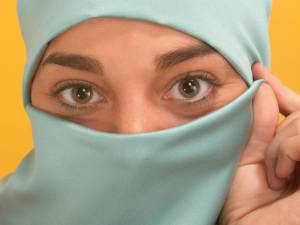Religious Freedom for Canadian Muslims
 Canada is a country where religious freedom is a given. Numerous immigrants chose Canada specifically because of the rights afforded to residents. For many people worldwide, head coverings are an essential part of their beliefs. Recent events have called into question the rights of Canadians to wear certain religious headwear.
Canada is a country where religious freedom is a given. Numerous immigrants chose Canada specifically because of the rights afforded to residents. For many people worldwide, head coverings are an essential part of their beliefs. Recent events have called into question the rights of Canadians to wear certain religious headwear.
Beyond the Burka: Traditional Muslim Headwear
Confusion about the different types of head coverings may have contributed to the debate. Here are some of the most popular ones people wear:
- Burka: The most concealing of all headware, the burka covers the entire body and obscures the face. There is a semi-transparent rectangular piece around the eyes so the wearer can see.
- Niqab: The niqab is slightly less concealing than the burka. The area around the eyes is clear, but the rest of the face is veiled.
- Hijab: The hijab is most frequently worn by Muslim women in Western countries and is available in a wide variety of colors and styles. It is a headscarf that leaves the face unobscured while covering the head and chest.
- Al-amira: A two-piece veil, an al-amira is made of a snugly fitted cap and tub-like scarf that covers the head and neck, but not the face.
2015 Headwear Controversy
The most recent controversy involved a woman who wore a hijab to a court proceeding in early March. The automobile insurance board of Quebec had seized Montreal resident Rania El-Alloul’s car, and she was trying to recover it. Judge Eliana Marengo refused to hear her testimony unless she took off her veil. The judge said donning a hijab in court was comparable to wearing sunglasses. El-Alloul refused to comply. She filed a complaint against the judge and is also contemplating further legal action.
In late February, former Pakistani school teacher Zunera Ishaq was told she could not wear her niqab to her citizenship ceremony. Prime Minister Stephen Harper supported the decision even though a federal judge had ruled to the contrary earlier in the month. Harper disagreed with the ruling, saying he doesn’t believe prospective citizens should be permitted to wear any type of face covering to the ceremony. Some feel Harper’s move is politically motivated and tied to his bid for re-election later this year. Ishaq hopes the prime minister’s attempted ban is denied by a judge and has postponed participating in a citizenship ceremony until the issue is resolved.
Other Controversies
- In April 2013 in Ontario, Judge Norris Weisman ruled that a woman (who has not been identified) must remove her niqab while testifying against her uncle and cousin, whom she accused of sexually assaulting her in the 1980s. The woman was pregnant when the alleged assault occurred. She had been fighting for the right to wear her veil in court for six years, and Judge Weisman’s original 2008 ruling went all the way to the Supreme Court. He stated that wearing a niqab would make it very difficult for the judge and defense attorneys to evaluate the plaintiff’s demeanor and credibility, which can be particularly important in sexual assault cases.
- Another 2013 incident involved a soccer player who was told by officials from the Quebec Soccer Federation he could not wear a turban on the field. The Canadian Soccer Association had previously stated turbans were permitted. FIFA later reversed the ban and apologized to anyone who been offended.
- In 2007, Quebec election official Marcel Blanchett said he would allow women wearing niqabs to vote in an upcoming election. His decision created a firestorm, and Blanchett had to hire two personal bodyguards for his own protection as well as placing security officers in his office building. He later reversed the ruling.
The cold weather makes headwear popular in Canada. However, recent events have made it clear one’s rights may not be what you think they are depending on the type of headwear you choose.

